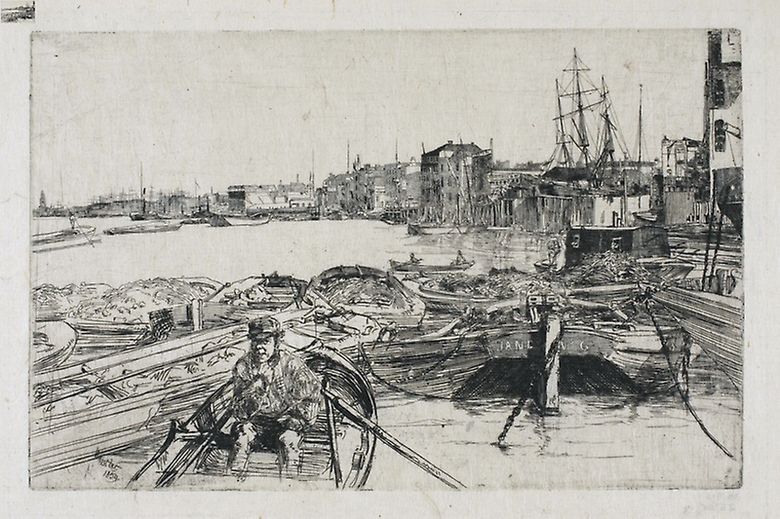
Many art critics believe that the best works of Whistler are his engravings. He really was an outstanding master of this genre, yielding, perhaps, only to the great Rembrandt. Even during his life, Whistler’s etchings were highly valued by his contemporaries – and this despite the fact that the manner of the artist seemed to many to be controversial.
The basis of engraving Whistler mastered while working in the Washington Geodesic Service, but fully appreciated this genre only after moving to France. In the 1850s, interest in engraving in France increased noticeably. This was due to the appearance of the works of Charles Meryon. The influence of this master is evident in the early etchings of Whistler – in particular, in a series of his engravings “Views of France”, two of which were shown in the Salon of 1859.
The versatility of the etching technique allowed Whistler to work in a very different manner. His engravings with the views of the Thames – such as the “Black Lion Wharf”, 1859, “Roserhayt”, 1860 or “Zavod” – are sustained in a naturalistic manner. And the late etchings of the artist – for example, his famous “Fatigue” – differ in a mysterious, dreamy atmosphere, and they are asked to define “romantic.”
 Showcase by James Whistler
Showcase by James Whistler Backwater – James Whistler
Backwater – James Whistler Mother’s portrait by James Whistler
Mother’s portrait by James Whistler Symphony in White No. 3 by James Whistler
Symphony in White No. 3 by James Whistler Portrait of Theodore Dure by James Whistler
Portrait of Theodore Dure by James Whistler At the piano by James Whistler
At the piano by James Whistler Sea, beach and shapes by James Whistler
Sea, beach and shapes by James Whistler Nocturne in blue and silver: Wharf in Battersea by James Whistler
Nocturne in blue and silver: Wharf in Battersea by James Whistler